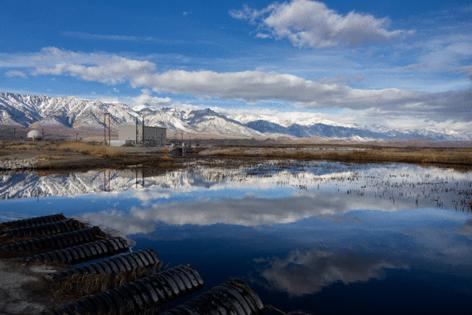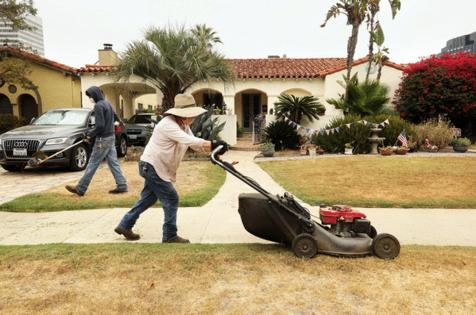LA's water supplies are in good shape. But is the city ready for the next drought?
Published in Science & Technology News
LOS ANGELES -- California’s second wet winter in a row has left L.A’s water supplies in good shape for at least another year, but the inevitable return to dry conditions could once again put the city’s residents in a precarious position.
After the state’s final snow survey of the season, officials with the Los Angeles Department of Water and Power announced that Eastern Sierra snowpack is measuring 103% of normal, “providing ample supplies through the city’s most cost-efficient water supply from the Los Angeles Aqueduct.”
The aqueduct — two pipelines that deliver water from the Mono Basin and Owens Valley hundreds of miles away — is the backbone of L.A.’s water system. The recent rain and snowpack have filled the the DWP’s reservoirs in the region and will allow the aqueduct to meet approximately 70% of the city’s water demand. That equates to about 114 billion gallons of water, or enough for about 207,000 households for a year.
Agency officials said they have also been able to capture 30 billion gallons of stormwater since last fall, or enough to meet 20% of the city’s annual water demand. The remaining supplies will come from recycled water and water imported from the Metropolitan Water District of Southern California, they said.
But although current conditions are promising, L.A. must maintain its ethos of conservation and prepare for dry times ahead. El Niño, the climate pattern that helped drive California’s recent stormy conditions, is expected to wane in the weeks ahead, and there is an 85% chance that its drier counterpart, La Niña, will develop by late fall or early winter.
“While our reservoirs are full following two wet winters, we are still seeing the impacts of climate whiplash across the state,” read a statement from Martin Adams, the DWP’s general manager and chief engineer. “We know we have to stay focused on our investments in local water supply projects as LADWP continues to evolve and balance the needs of our customers with the challenges associated with extreme weather patterns. More than anything else, we encourage our customers to stay vigilant in their water-wise practices, which have helped keep water conservation citywide near record highs.”
Indeed, it was only two years ago that Angelenos were experiencing a devastating three-year stretch of drought and living under the strictest water restrictions the region has ever seen. Hillsides were caked and brown, city streets were dotted with dead lawns, and wildfires raged throughout the state and region, feeding on bone-dry grass and shrubs. Southern Californians were limited to just 80 gallons of water per person per day.
The city has used the wet reprieve to make progress on some of its marquee water projects, including its Tujunga spreading grounds facility in the San Fernando Valley, according to Anselmo Collins, the DWP’s senior assistant general manager. The facility is already working to treat the polluted groundwater basin and provide enhanced groundwater storage. When fully completed, it will deliver nearly 12,200 acre-feet of annual recharge and have the capacity to treat more than 55,000 acre-feet per year. (An acre-foot is about 326,000 gallons.)
“It’s already showing huge benefits, because we’ve been able to increase how much we capture and put back into the ground,” Collins said. He said the Tujunga project and other treatment facilities in the Valley, including two fields in North Hollywood, were largely behind the 30 billion gallons captured so far this season.
Another project that’s progressing is the Donald C. Tillman water reclamation plant in Van Nuys, which will use recycled wastewater to replenish the San Fernando groundwater basin. Construction is expected to begin later this year, and the plant could add 21,000 acre-feet of supply to the city as soon as 2027, Collins said.
...continued
©2024 Los Angeles Times. Visit at latimes.com. Distributed by Tribune Content Agency, LLC.












Comments